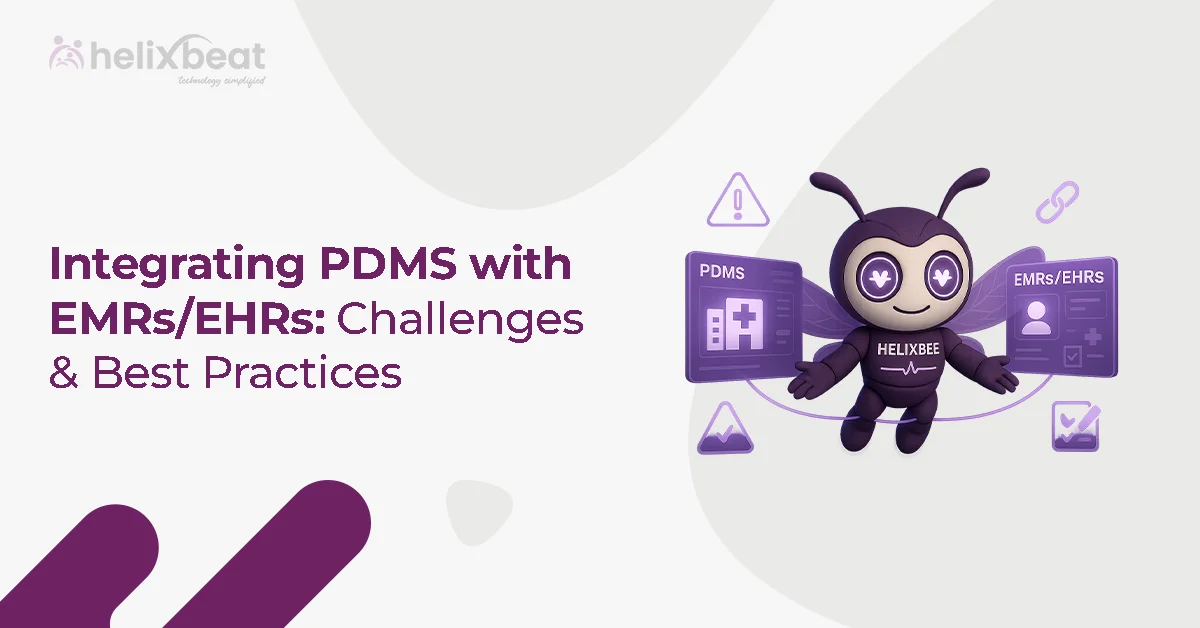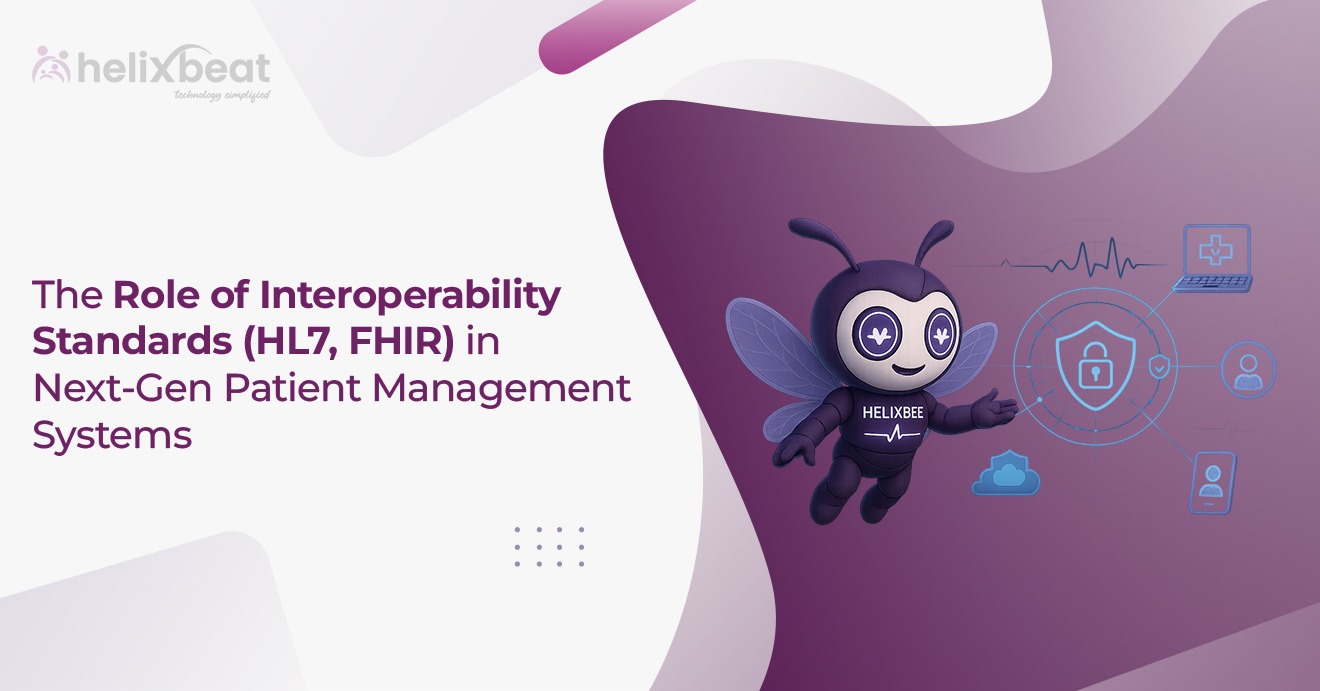Your hospital has just onboarded a new EHR system. Everyone’s excited about finally achieving seamless data sharing between departments, partner clinics, and even patients’ mobile apps. But soon, chaos erupts — patient records aren’t syncing correctly, test results are missing, and physicians are seeing outdated information. Instead of improving care, your hospital faces angry patients, delayed treatments, and compliance risks.
This is a common nightmare many healthcare providers face during EHR data integration.
While FHIR (Fast Healthcare Interoperability Resources) promises to solve the healthcare interoperability challenge, mistakes during FHIR EHR integration can create bigger problems than they solve. Poor data mapping, security oversights, version mismatches — these errors can cripple your practice and endanger patient safety.
In this blog, we’ll walk through the five most common mistakes when transmitting EHR data through FHIR, and how Fusion ensures flawless, secure, real-time EHR standards in FHIR integration.
Table of Contents
Understanding FHIR
Before getting into the topic, you need to understand FHIR.
Electronic Health Records (EHR) have made a significant impact on healthcare practices.
Although EHRs help maintain, digitize, and organize patient information, this data must flow seamlessly between healthcare entities such as pharmacies, labs, clinics, and hospitals.
This is where FHIR comes into play. FHIR (Fast Healthcare Interoperability Resources) is a standard for exchanging healthcare information electronically.
It facilitates the seamless exchange of information between different healthcare systems to improve interoperability.
Healthcare providers and practices can easily access patients’ comprehensive information.

Five Common Mistakes When Transmitting EHR Data through FHIR
These are the five common mistakes that occur when transmitting EHR data through FHIR, impacting healthcare practices.
1. Incomplete Mapping of EHR Data Fields
One of the most frequent mistakes during EHR data integration is incomplete or incorrect data mapping. Every EHR system has its own way of structuring patient data, and even with EHR standards in FHIR, discrepancies can occur.
For instance, one system may store allergy information under a different schema or naming convention than another. If mappings aren’t meticulously planned and tested, critical data such as medication lists, diagnoses, or allergies could be left out or incorrectly interpreted after transmission.
Impact:
- Loss of critical patient information
- Risk to patient safety
- Increased workload for healthcare providers who must correct errors manually
How to avoid it: Prioritize a detailed field mapping strategy. Use validation tools that ensure all important data points from source EHRs correctly align with FHIR for healthcare interoperability models. Regular audits can help catch missing fields early in the process.
2. Ignoring FHIR Version Compatibility
While FHIR EHR integration is based on standard specifications, different systems may adopt different FHIR versions (such as DSTU2, STU3, or R4). Ignoring version compatibility is a costly mistake.
If a sender uses a different version of FHIR than the receiver expects, it can cause failed transmissions, misinterpretations, or rejected records. Despite EHR standards in FHIR, real-world implementations often lag or deviate slightly, causing integration hiccups.
Impact:
- Breaks in communication between systems
- Increased troubleshooting time
- Higher costs due to rework
How to avoid it: Always verify FHIR version like fusion compatibility before initiating EHR data integration projects. Establish clear protocols for handling different versions and use middleware solutions that can translate between versions if necessary.
3. Lack of Strong Authentication and Authorization Measures
Another major pitfall during FHIR EHR integration is neglecting robust security measures. Since FHIR APIs open up access to sensitive patient data, they become attractive targets for cybercriminals.
Many organizations mistakenly focus heavily on the technical aspects of EHR data integration but overlook setting up secure OAuth2 protocols, token management, and role-based access control.
Impact:
- Data breaches and HIPAA violations
- Legal penalties
- Loss of patient trust
How to avoid it: Integrate security best practices as part of your Fusion’s FHIR for healthcare interoperability approach. Implement OAuth2 for authentication, ensure encrypted data transmission (HTTPS), and perform regular security assessments. EHR data integration should never compromise on security.
4. Underestimating Data Validation and Error Handling
EHR data integration isn’t just about transferring data — it’s about transferring accurate data. Poor validation and error handling strategies often cause transmission failures or lead to the propagation of bad data across systems.
Common mistakes include:
- Not validating incoming FHIR resources against schemas
- Allowing partial or incomplete data to enter the system
- Inadequate logging of errors for troubleshooting
Without proper validation, one small error can ripple through multiple systems, causing cascading failures.
Impact:
- Inaccurate clinical decisions based on incorrect data
- Increased time and cost for manual corrections
- Degradation of system trustworthiness
How to avoid it: Design a multi-layered validation mechanism to check data formats, completeness, and correctness at every step. Always log transmission errors with enough context for easy debugging. Focus on ensuring that only clean, verified data enters downstream systems through fusion’s FHIR EHR integration.
5. Assuming All FHIR Implementations Are the Same
A surprisingly common myth is that adopting FHIR for healthcare interoperability ensures plug-and-play integration. However, different EHR vendors often customize FHIR implementations according to their internal data structures or business logic.
For example, while one system might fully implement the Patient and Observation resources, another might only partially support them or extend them differently. Relying solely on the FHIR label without understanding these nuances leads to serious issues during EHR data integration.
Impact:
- Miscommunication between systems
- Unpredictable behavior and integration failures
- Higher customization costs post-integration
How to avoid it: Conduct thorough interoperability testing. Carefully review the EHR vendor’s FHIR conformance statements and custom extensions with fusion. Build flexibility into your integration workflows to accommodate slight differences in FHIR profiles.
Impact of FHIR Mistakes on Healthcare Data Integration
When transmitting Electronic Health Records (EHR) data through FHIR (Fast Healthcare Interoperability Resources) , the consequences of errors can extend far beyond simple inconvenience. These mistakes not only disrupt internal workflows but can also lead to severe consequences for both healthcare providers and patients.
Loss of Critical Patient Information
One of the most severe impacts of FHIR mistakes is the potential loss of critical patient information. Incomplete mapping or errors in FHIR implementations can lead to missing patient data such as allergies, medication lists, and diagnoses. This oversight can result in physicians being unaware of a patient’s medical history, leading to potential misdiagnoses, improper treatment plans, and medical errors. The loss of accurate and comprehensive patient data also makes it difficult for healthcare providers to deliver personalized care, which is crucial in improving patient outcomes.
Patient Safety Risks
Miscommunication or incorrect data transmission through FHIR can directly compromise patient safety. Incorrect or outdated information may be used to make medical decisions, leading to adverse drug reactions, delayed treatments, or even life-threatening mistakes. For example, if a patient’s allergy data is mapped incorrectly during EHR data integration, it could lead to the administration of a medication that causes an allergic reaction. Ensuring FHIR data integration adheres to proper standards and accuracy is vital to mitigating such risks.
Increased Operational Costs and Delays
When FHIR integration mistakes occur, healthcare organizations are forced to spend significant time and resources on troubleshooting and rework. These operational inefficiencies can delay patient care and strain healthcare providers’ already overburdened staff. For example, resolving data errors and discrepancies can require manual intervention, which increases labor costs and causes delays in treatment. In some cases, healthcare organizations may need to implement costly fixes, such as upgrading their systems or purchasing middleware to bridge integration gaps.
Compliance and Legal Risks
Non-compliance with healthcare regulations like HIPAA (Health Insurance Portability and Accountability Act) is a significant risk when mistakes occur during FHIR integration. Security oversights, such as failing to implement strong authentication or encryption protocols, can expose sensitive patient data to cybercriminals. Healthcare providers who experience data breaches or fail to meet FHIR standards for healthcare interoperability may face legal penalties, reputational damage, and loss of patient trust. Compliance violations can also hinder an organization’s ability to participate in larger health data exchanges and government programs.
Decreased System Trustworthiness
When healthcare organizations experience frequent errors in their FHIR EHR integration, it leads to a lack of trust in the system’s reliability. Staff may become hesitant to rely on the system, preferring to use outdated manual processes, which further diminishes efficiency. The overall credibility of the healthcare IT infrastructure may be questioned, both internally and externally, affecting patient satisfaction and staff morale. Trust is paramount in the healthcare industry, and recurring integration mistakes directly undermine it.
Why Getting EHR Data Integration Right Matters
Flawless EHR data integration is essential for delivering coordinated care, reducing administrative burden, and achieving value-based care outcomes. Effective FHIR EHR integration ensures that clinicians have timely access to complete and accurate patient data, no matter which EHR system was originally used.
Moreover, true EHR standards in FHIR like fusion adherence enables organizations to participate seamlessly in larger healthcare data exchanges, government initiatives, and emerging digital health ecosystems.
In the coming years, as FHIR for healthcare interoperability becomes the backbone of healthcare IT, mastering clean, secure, and efficient EHR data integration will be a competitive advantage — not just a technical requirement.
Final Thoughts
EHR data integration through FHIR offers immense promise, but only if implemented correctly. Avoiding these five common mistakes — incomplete data mapping, ignoring version compatibility, weak security practices, poor validation, and assuming uniform FHIR support — can drastically improve the success of your FHIR EHR integration projects.
Healthcare organizations must remember that FHIR for healthcare interoperability is a tool, not a magic bullet. Success lies in careful planning, diligent execution, and constant vigilance around data quality and security.
At Fusion, we specialize in helping organizations achieve secure, scalable, and efficient EHR data integration. Whether you’re just starting your FHIR EHR integration journey or facing challenges with your existing systems, our team is ready to help you navigate every step — ensuring compliance with EHR standards in FHIR and setting you up for long-term success.
FAQs
1. What are the main challenges in EHR implementation?
The key challenges include high initial costs, resistance to change from staff, data security concerns, interoperability issues with other systems, and the complexity of data migration.
2. How can hospitals overcome resistance to adopting EHR systems?
Hospitals can provide comprehensive training, involve staff in the decision-making process, and gradually introduce the system to ensure smooth adoption.
3. Why is data security crucial in EHR implementation?
EHR systems store sensitive patient data, making it essential to have robust security measures in place, such as encryption and access controls, to prevent data breaches and ensure compliance with privacy laws like HIPAA.
4. What does interoperability mean in the context of EHR?
Interoperability refers to the ability of an EHR system to communicate and share data with other health IT systems. It ensures seamless patient care and coordination across different providers.
5. What are the benefits of using EHR systems?
EHR systems improve patient care, reduce medical errors, streamline workflows, enhance communication between healthcare providers, and simplify regulatory compliance.
6. How can hospitals reduce the costs of EHR implementation?
Hospitals can apply for government subsidies, choose scalable EHR solutions, and optimize training programs to reduce long-term costs associated with EHR systems.
7. What are the risks if EHR systems are not implemented properly?
Improper implementation can lead to inaccurate patient data, workflow disruptions, legal issues due to compliance failures, and diminished trust from patients and staff.














